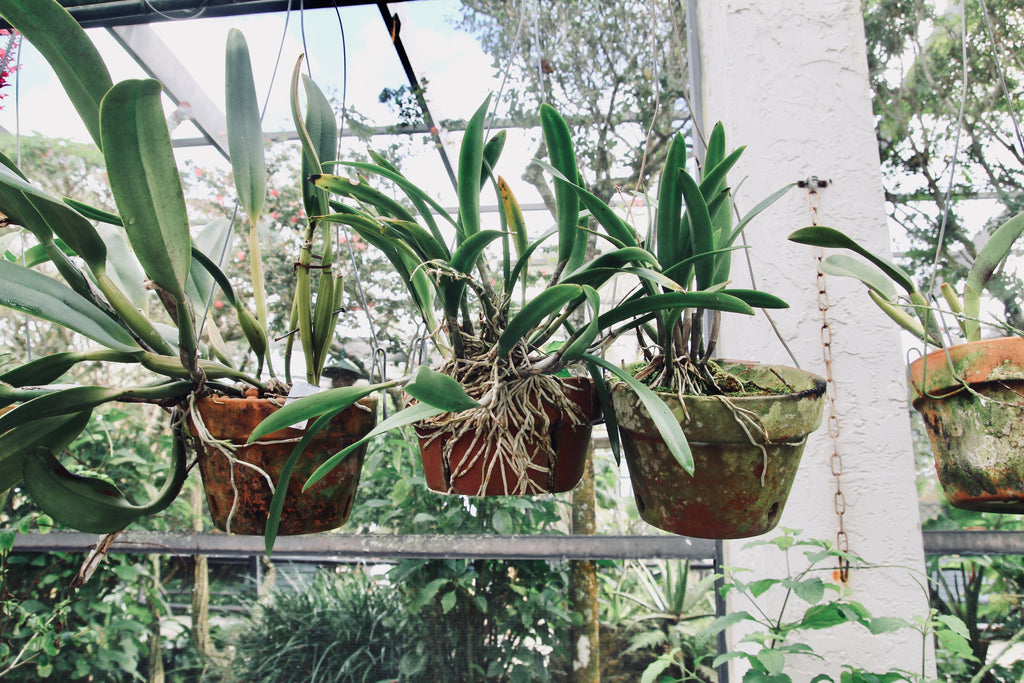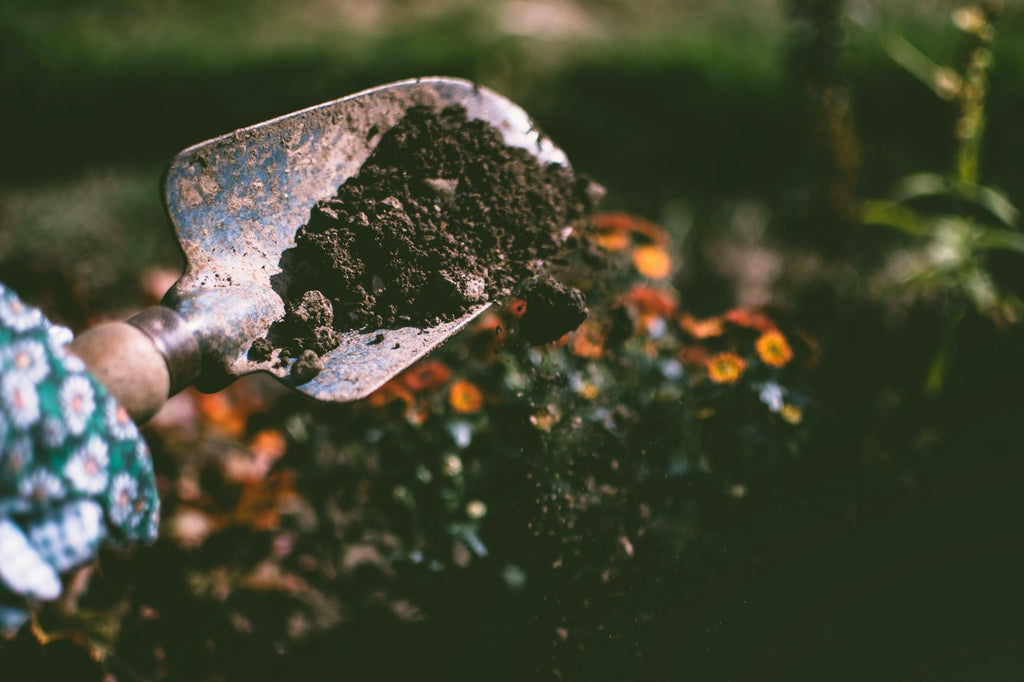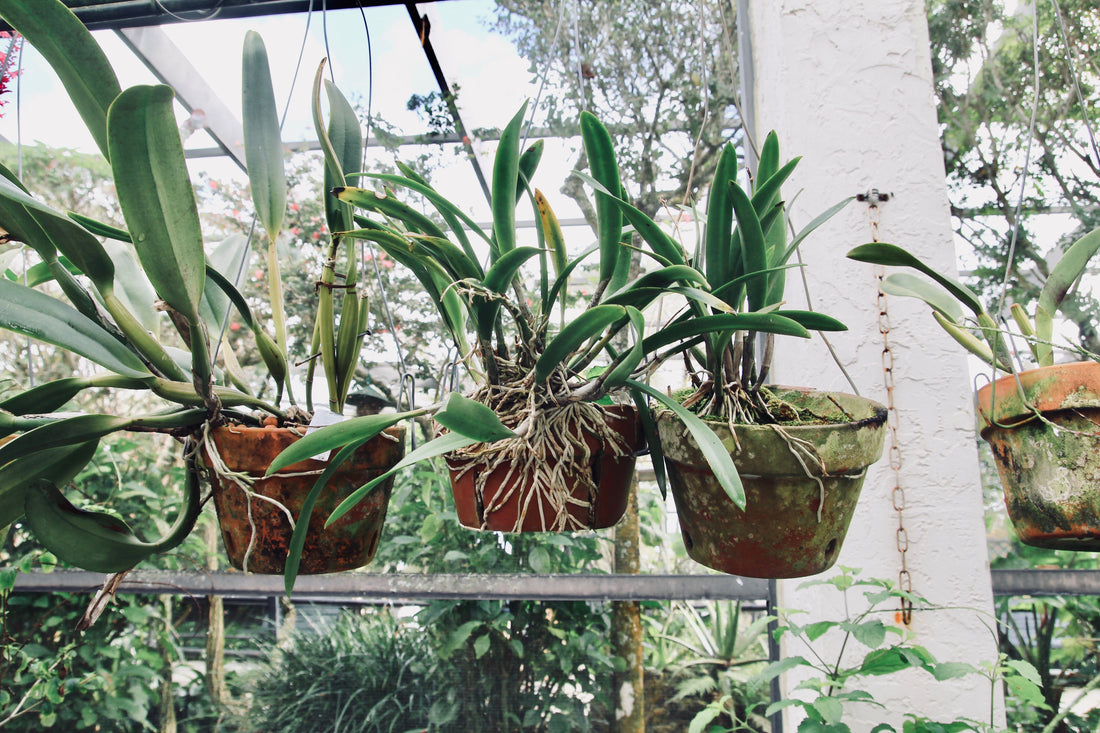
Healthy root systems lead to healthy plants. Sunlight and water, of course, are essential for plant growth. But do you know what stimulates root growth beneath the surface and keeps roots performing? Do you really know what has been working with plant root systems for millions of years?
We have the answer: ancient and microscopic microbes.
If you want bigger crops, higher yields, and more robust plant growth you need to know how these highly efficient, typically unseen bacteria and fungi can maximize nutrient absorption for your plants and stimulate root growth.
Plus, whether you're working in soil or hydroponics, an organic nutrient line rich in microbes can tap into this age-old symbiotic relationship.
Rhizosphere, Microbes and Why Root Growth Is Crucial
You know a plant's root system is the secret to plant longevity and health.
These underground branching structures are not only a physical foundation. The roots are a nutrient absorbing machine.
Root health determines if your plant will have what it needs to survive.
What is Root Zone Process? Well, There's More Than One

The root zone known as the rhizosphere is an active and busy world. There is no single root process that happens here but multiple processes.
These processes include water transport, nutrient uptake, root respiration, and more. The root zone is perhaps one of the least understood and yet one of the most crucial parts of the plants. Our understanding of the full range of processes may be limited, but laying out what we do know can help us figure out what stimulates root growth.
The root zone has several defined areas: the surrounding soil, rhizosphere, rhizoplane, and endosphere.
- Soil: If growing in soil, it's essential to maintain enough space around roots to allow a root system to stretch out further and reach out for more access to nutrients and water.
- Rhizosphere: the soil directly surrounding the root systems, teeming with a wide diversity of microbes.
- Rhizoplane: the root surface where microbes often find a place to adhere. This root surface structure is where root hairs develop, providing an incredibly large surface area where many processes take place.
- Endosphere: this narrow interior space of the plant root system is where a very small selection of microbes can live.
The rhizosphere is a thin layer of soil (as small as a few millimeters to at most a couple of centimeters). Here is where the most vibrant colonies of microbial bacteria, fungi, and other microbes work alongside root systems.
This zone is teeming with life. In fact, millions of individuals and several thousand species of tiny, microscopic bacterial populations inhabit a single gram of soil.
Microscopic Magic: What Are Beneficial Soil Microbes?
Microbes are microorganisms.
Some microbes in our world get a bad rap (the deadly ones like tuberculosis and streptococcus). Yet, for the most part, these worms, fungi, and bacteria ultimately keep our world in balance.
Think about them like this: microbes are anything you need a microscope to see. They can be single-cell, multi-cellular, or clusters of cells. Inhabiting water, soil, air, bodies, and more, they live literally everywhere in our world.
From transforming nutrients to moving and consuming good and bad bacteria, the world of these tiny, little creatures is busy and bustling.
Here are the five most common soil-inhabiting microbes you need to know and how they help with root growth:
- Bacteria- the smallest and most abundant microbes, there is incredible diversity in the types of beneficial bacteria, and different types have different functions.
- Actinomycetes- interlinked between bacteria and fungi, they are nitrogen-fixing, phosphate solubilizing, and the primary type of bacteria that decompose cellulose. (Note: these organisms give soil it's "earthy" smell.)
- Fungi- Second most abundant microbe after bacteria, they optimize the transfer of soil nutrients by trading nutrients for carbohydrates from the plants. Fungi can be beneficial; mycorrhizal fungi make phosphorus soluble. However, there are also parasitic fungi that can be disastrous for your plant.
- Protozoa- larger than bacteria, these single-celled organisms feed on bacteria, fungi, and sometimes other protozoa. They help maintain microbial equilibrium and battle against disease-causing microorganisms.
- Nematodes- these tiny worms can be both good and bad. The bad ones cause harmful diseases, but the good ones mineralize nutrients and mobilize ammonium.
The microbes living in soil help with numerous plant processes. For example, they can munch unavailable nutrients and transform them into usable forms the plant roots can uptake. This is just one example of the hundreds of ways microbe play a part in what stimulates root growth.
How Do Bacteria Help Plants Grow and Other Microbe Benefits

The beneficial microbes in the soil, which we detailed above, are primarily organisms that work symbiotically with plant root systems. While the greatest number of microbes fall under the bacterial category, actinomycetes, fungi, protozoa, and nematodes all play an essential role in what stimulates root growth.
To start with, plants release various compounds like sugars and amino acids that microbes feed on. So microbes flock to these root systems to feast. Then, microbes, like bacteria, convert this buffet of compounds into simpler structures that plants can use.
The primary benefits of microbes in a root system are that they:
- Fix nitrogen and increase its availability
- Solubilize phosphate, potassium, sulfur and other essential nutrients
- Can produce chemicals and root hormones to stimulate plant growth
- Colonize root systems and can protect against disease and pests
- Increase water retention and optimize soil aeration
- Promote healthy pH environment and maximize plant nutrient uptake
While some certain fungi and bacteria can be detrimental to your plant, for the most part, they promote growth.
With the incredible variety of types of bacteria contained in a small gram of dirt, their overarching benefits are a hundred-fold.
Just think, in that single gram of soil, you can have nitrogen-fixing bacteria, plus others that create rooting hormones to stimulate longer root lengths. At the same time, there are even others that defend against parasitic organisms.
All in all, the bacteria doesn't just help a plant grow by optimizing nutrient uptake and structural growth, but it also protects and defends.
How To Promote Root Growth For Your Plants
Of course, you know watering, creating an aerated growth environment within optimal pH levels, and fertilizing with proper nutrient blends is essential to healthy root systems.
However, if your plants are unable to access nutrients in the proper form, adding fertilizer with phosphorus, potassium and nitrogen won't necessarily guarantee nutrient uptake.
Plus, depending on the type of water you are using you might be killing off the microbes that were there to begin with. Often municipal water contains chloramine, a combination of chlorine and ammonia that makes water safer for drinking and it's probably okay for house plants too. However, it can be detrimental to the beneficial microbes that work in your high performance crop's world.
Perhaps you’ve heard about sourdough bakers' concern with killing yeast when they try to build a starter or bake bread using tap water. Similar to the way chloramine is known to kill yeast in this process, it is thought to be harmful to the beneficial microbes living in your plant's root system, especially in hydroponics. Using filtered water is an excellent remedy to this dilemma.
That’s why adding microbes to roots can work in your favor.
Whether you are working in soil or hydroponics or another grow medium, adding microbial blends gives your plants the power of beneficial microbes.
Microbial Blends for Optimizing Plant Nutrient Uptake Mechanisms

Many products exist that offer microbial blends to maximize nutrient uptake. These blends contain different bacteria and microbes promising to promote growth. But how are you supposed to know which one is the best product?
The key is diversity.
Comparing the microbe profile of some of the top microbial blends can help understand what they offer.
Tribus
Unique Point: Tribus claims to have the highest concentration of bacterial colonies on the market.
Note: 10 billion colony forming units per milliliter.
Bacteria: Blend of 3 growth-promoting rhizobacteria.
- Bacillus subtilis: Spore forming, rod-shaped antibiotic-producing bacteria. Phosphate solubilizing.
- Bacillus amyloliquefaciens: Closely related to Bacillus subtilis, antifungal properties.
- Bacillus pumilus: Spore forming, rod-shaped, play a role in adhesion to host cells, promote healthy rhizobacteria growth, increases plant resistance to disease, nitrogen-fixing.
- Mediums: Soil, soilless, hydroponic
Shelf Life: 12 month
Mammoth P
Unique Point: Mammoth P is a unique phosphorus focused enzyme structure, developed by three Colorado State University PhD soil microbiologists
Note: Focused on phosphorus and other micronutrient cycling, 30x phosphorus cycling
Bacteria: 4 primary bacterial taxa
- Enterobacter cloacae - Biologic control against plant diseases; however this pathogen can be deadly for humans and animals
- Citrobacter freundii - Crucial in the nitrogen cycle and nitrogen-fixing
- Pseudomonas putida - Forms a mutual relationship with plant roots. Protects plants from pathogens and can degrade organic pollutants (important in bacteria-remediated soil processes). Solubilizes essential nutrients. Creates protective biofilm for plant roots to protect from fungal pathogens. And, it helps maintain pH.
- Comamonas testosteroni - non-spore-forming, environmental organism
Mediums: Soil, soilless, hydroponic
Shelf Life: Recommended to be used within 6 months of purchase
Amplify
Unique Point: Amplify was originally developed to counteract the detrimental effects caused by Agent Orange. It includes both bacteria and fungi in a fermented solution
Note: Adds bacterial and fungal diversity to plant root system and foliar surface
Bacteria
- Azotobacter Vinelandii - Nitrogen-fixing, produces plant hormones and plant vitamins
- Bacillus Subtilis - Battles plant diseases and pests. Phosphate solubilizing.
- Pseudomonas Fluorescens - degrade pollutants, suppress pathogens and disease, and allow plants to attain key nutrients like iron. Plant cells emit superoxide (which is toxic to microbes). P. fluorescens can convert this and protect the rhizosphere bacteria population.
- Nitrosomonas Europaea - nitrogen and carbon fixing, ammonia-oxidizing, and incredibly competent at soil reparation. Its ability to degrade industrial and sewage waste make it an incredible organism for bioremediation.
- Glomus Intraradices - Colonizes roots with tree-like hyphae that promote phosphorus uptake.
Mediums: Soil, soilless, hydroponic, foliar spray
Shelf Life: The microbe community is grown in a shelf-stable fermentation. Plus, it includes fulvic acid which stabilizes the microbes and further extends the solution's shelf life.
Diversity, It's What Stimulates Root Growth
When it comes to microbes, each one has a slightly different job in the community. Simply optimizing the presence of one bacteria will not help your plant. So when it comes to adding microbes to your roots, keep that in mind.
The trick is to maximize microbial power by building a community that works together to support a healthy environment. Much like our own world wouldn't function if everyone had the same job, a microbe colony will not survive without a variety of species and types offering different services.
If we come back to answer the question of what stimulates root growth, we can add that there really isn't one single solution. Instead, it's the entire process of watering, fertilizing, and optimizing microbial communities to maximize nutrient uptake and manage proper water absorption.
You might also want to keep in mind that bacteria and fungi are essential in the rhizosphere, but they can also be used on your leaves. For example, microbes are incredible powerhouses that protect against diseases such as powdery mildew. You see, the leaf surface is also home to an incredible assortment of microscopic organisms that provide a defense to your plant and promote plant health.
Amplify: Our Choice For Optimal Microbe Diversity
When we talk about microbes activity in the rhizosphere, it's important to note that we are not only talking about bacteria.
As we've said, what stimulates root growth is a diverse microbial community.
You can have a million or billion of the same bacteria strain, but that will be much less effective than a wide range of microbial species working together in harmony.
When choosing a microbial organic nutrient line for your roots, consider variety in both organisms, abilities, and applications. You want to optimize the nutrient uptake of as many nutrients as possible.
You also should find a blend that can protect and defend against diseases and pests.
From our review and analysis, Organitek's Amplify stands out. Rather than buying a bacterial consortium and a separate fungi application, you can buy this single microbial blend that offers benefits for roots, leaves, and more.
Advantages of using Amplify
- Increases nutrient utilization of macro and micro nutrients
- Diversity of microbial species
- Works in all mediums from soil to hydroponic
- Can use through all stages
- Healthier plants, flowers
- Combats and protects against pathogens and bugs
Disadvantages of using Amplify
- Microbial blends can be sensitive to temperature and pH levels
- You might already have the microbes in your soil
- Must carefully apply with the correct dilution regularly
- Interferes with natural microbial presence
Tribus Original vs. Amplify
Microbial Concentration and Results: Tribus has been touted for a super concentration of microbes at 10 billion CFU/mL. Given it’s high concentration, it works quickly and results can be seen in a number of days.
Amplify has a more long-term balanced approach with a lower concentration that allows microbes to do their work without overwhelming the existing rhizosphere. This means results are regular and augment over time. Those results include overall increase in yield, healthier leaves and more rapid maturing of plants.
Microbial Diversity: While the bacteria focused Tribus’ blend means it outperforms in concentration levels, it underperforms in diversity. Amplify offers both fungal and bacterial microbes that work harmoniously to prevent disease, cycle nutrients and support plant systems and processes.
Transplanting: Both offer ease in transplanting by supporting healthy soil and root health.
Use: Can be used in all growth mediums: Soil, soilless, hydroponic
Stability: While proper storage of any shelf-stable product is necessary, Tribus is much more volatile and comes with a slew of hazard warnings and can cause skin irritations. Amplify, on the other hand, is built for safety and is not hazardous for the environment. It is safe to use and non-toxic.
Mammoth P vs. Amplify
Microbial Concentration and Results: Both Amplify and Mammoth P offer a similar concentration of microbes.
Microbial Diversity: Mammoth P was designed with Phosphorus in mind. So it’s strong army of bacteria supports phosphorus uptake first, followed by a natural increase in nutrient uptake due to the improved microbial population.
However, Amplify still outperforms Mammoth P as it offers both bacteria and fungus to the rhizosphere supporting a balanced microbial population rather than overwhelming the system with a concentration of bacteria. The Amplify bacteria are designed to work together and each offers unique benefits.
Cost: Mammoth P is one of the most expensive products, likely because it is one of the newest on the market and University developed.
Use: Can be used in all growth mediums: Soil, soilless, hydroponic
Stability: Both Amplify and Mammoth P are shelf-stable and non-toxic.
Why we think Amplify offers the most benefit
With the lowest price point, most diverse microbial profile, and ability to support many different plant functions, Amplify is our preferred choice.
While it may not have the highest concentration of bacteria to demonstrate too-good-to-be -be-true rapid results, it’s ability to perform exponentially over time is proven. Plus, it’s important to note that if there isn’t enough food to support a dump-off of a rich microbe population, they simply won’t survive. That’s a wasted effort and use of bacteria.
Instead, we prefer using a product that can work with existing nutrients and microbes. Amplify has taken 20 years to develop its unique blend to create a microbial team that works together. It has been rigorously tested to regenerate and repopulate rhizosphere environments.
On top of that, it’s non-toxic and shelf-stable. The fermented solution includes a system that continuously feeds microbes to keep them active and alive even while they are still stored in the bottle.
We trust it to work in all our grow mediums and optimize both macronutrients like Nitrogen, Potassium, and Phosphate as well as secondary nutrients and micronutrients.
Amplify’s microbe profile also works to suppress harmful soil organisms that could compete for nutrients the plants need for themselves. Finally, its addition of the beneficial fungi arbuscular mycorrhizae increases nutrient and water uptake.
All of these things increase root growth and ultimately help you grow bigger, more productive plants.
Now You Know The Best Root Enhancer For Your Plants
Plants and their root systems are incredible machines. Moving nutrients, conducting chemical processes, and building cells, they need proper care and resources to succeed. So knowing what stimulates root growth will help you help your plants.
Plants' incredible ability to build efficient, healthy root systems is one of the foundational components of overall plant health. And now you know that the relationship between microbes and plants is a mutually beneficial partnership. Long before agriculture existed, these microscopic organisms' role in plant life was vital to their success.
Now, especially with depleted over-farmed soils, using microbial treatments is a game-changer in our ability to grow robust, resilient plants. Plus, microbes have the uncanny ability to promote root growth directly. These bacteria, fungi, and other microscopic organisms work with the root structure in perfect harmony. They've been coexisting and working together for millions of years.
References:
Food and Agriculture Organization of the United Nations
University of Illinois - Soil Biology
Oxford Academic - Biological costs and benefits to plant-microbe interactions in the rhizosphere

